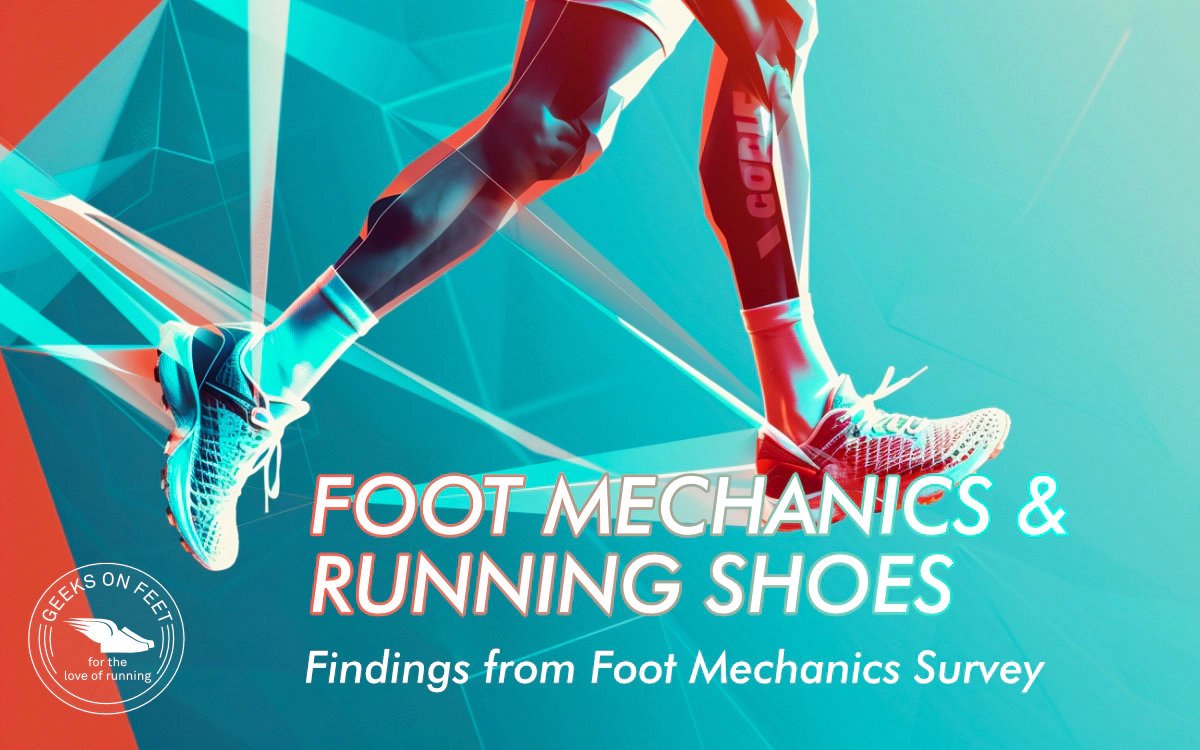
At RunMechcanics, quite a few runners reach out to us to help them in choosing running shoes based on their foot mechanics. We wanted to find out the perspective of the broader running community of how much they know about their foot mechanics, and how they select their running shoes. We’ve floated an online survey recently, and asked runners various questions on how they select their running shoes.
We are sharing some of the insights from the survey in this article.
About 130+ runners have participated in this survey with various levels of running experience and age demographics. While we would have loved a bigger sample size, we believe the survey findings reasonably represent the broader perspective.


Both of these data points suggest that the survey outcome is influenced by the experienced runners in the running community.
A significant number of respondents (75%) are aware of their foot pronation type, with a majority identifying as having a neutral pronation. This awareness comes from various sources, including self-examination, advice from professionals (coaches, physiotherapists), and assessments at shoe stores. That said, a portion of the participants (15%) don’t know their pronation type, highlighting a gap in awareness.

More than 45% of the participants identify with neutral foot pronation, which confirms the typical distribution. That said, a reasonably significant portion was identified (~30%) with overpronation. No wonder why the running shoe brands focus a lot on this segment of runners.

Regardless of pronation type, neutral shoes are overwhelmingly popular (~72%) among respondents. This probably indicates preference for the comfort and versatility of neutral shoes. This might also indicate the price point range and the variety in models make the neutral shoes a lot more approachable.

Stability shoes, designed to correct overpronation, are worn by only a subset of overpronators according to the survey. About half of the overpronators opt for neutral shoes instead of stability shoes, which may suggest personal preference or potentially a mismatch between shoe type and pronation needs.
On the other hand, 80% of underpronators choose neutral shoes. Given the relatively rare occurrence of underpronation, the choice of shoes might be influenced by the limited availability of dedicated options.

We also tried to understand if the number of years of running, and weekly mileage has a bearing on the types of shoes runners use. It is interesting to know that runners who are putting in more mileage tend to use neutral shoes, while there is no such correlation with years of running. This probably indicates that the runners with higher mileage tend to optimize their running form, and don’t see a need for stability shoes immaterial of their foot pronation type.
Runners with 3+ years of experience tend to own a wider range of running shoes, and many purchase 5+ pairs a year. This suggests that more experienced runners recognize the importance of having specific shoes for different purposes (training, racing, recovery) or rotate shoes to extend their lifespan and prevent injuries.

Runners with less than a year of experience typically own fewer pairs of shoes(≤3 pairs), which could indicate initial hesitation to invest heavily in running gear or uncertainty about their long-term commitment to running.

We also see that those running over 60+ km per week are more likely to own a larger number of shoes (3 to 5 pairs or 5+ pairs). High-mileage runners might need different types of shoes to handle the volume and variety of their training or are more likely to wear out quicker, necessitating more frequent purchases.
Frequent Racers, especially those competing in more than 4 races per year, often own a larger variety of shoes. This group includes both runners with 3+ years of experience and those in the 1-3 year range. Those participating in fewer races per year, particularly 1-2 races, tend to have fewer pairs of shoes and are less likely to have separate shoes for racing. This could be due to a more casual approach to running, where performance optimization, including footwear, is less of a priority.
Owning separate “race day shoes” is more common among the Frequent Racers, suggesting that they prioritize performance more and are more strategic about racing. 48% of runners have separate race day shoes.
Online Purchases are predominantly discount-driven. A significant 92.63% of online purchasers buy shoes on discounts (49.47% specifically on discounts and 43.16% strictly on discounts), highlighting a strong tendency towards price sensitivity among online shoppers. This could be influenced by easier access to price comparisons, deals, and promotions online.

On the other hand, a significant 37.5% of in-store purchasers are willing to pay full price for new editions of running shoes. This indicates a strong interest in the latest models and technologies, suggesting that in-store shoppers may value the opportunity to access the newest releases immediately.
Across online and instore purchases only 17% buy at full price, which indicates the general price sensitivity among Indian runners.
The insights from this analysis show there are significant variations in how runners select their shoes that align with their biomechanical needs. Also, many runners are not very knowledgeable about their foot mechanics and the possible shoes that fit them the best. This presents an opportunity for shoe brands to be more educative in their marketing efforts.
If you are interested to know more about Foot Mechanics and build general awareness of your running mechanics, please reach out to us [email protected] or Whatsapp on +919663610444.
Compiled by Team Geeksonfeet for the love of running.